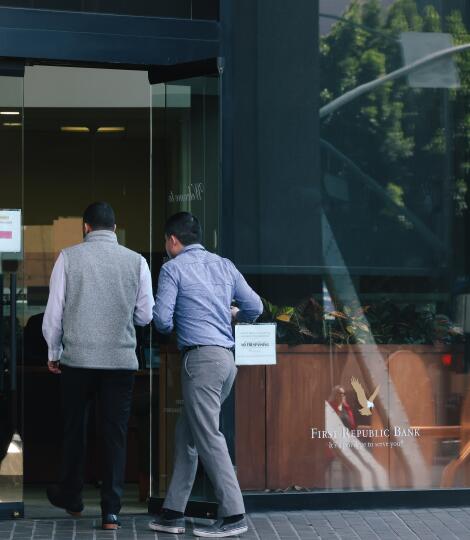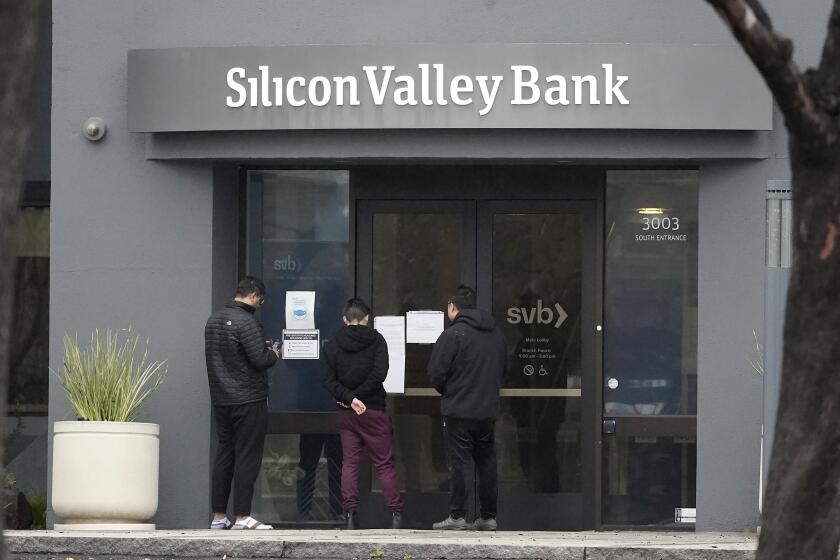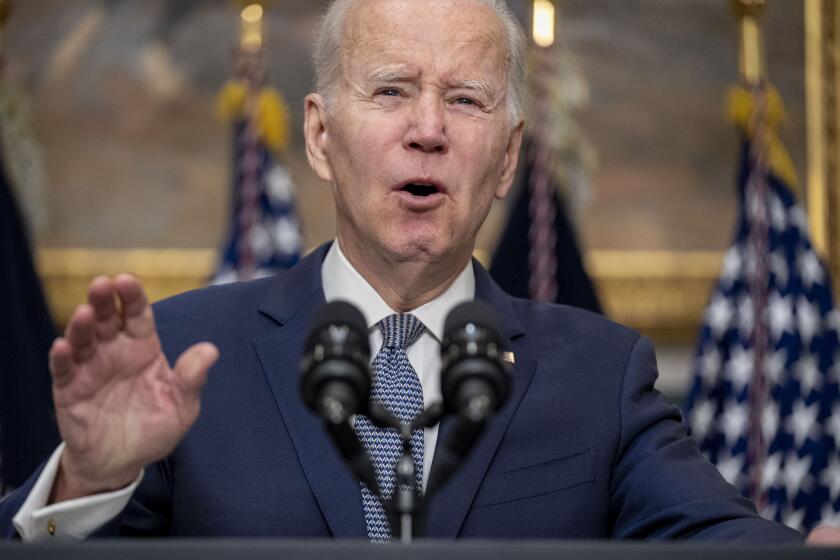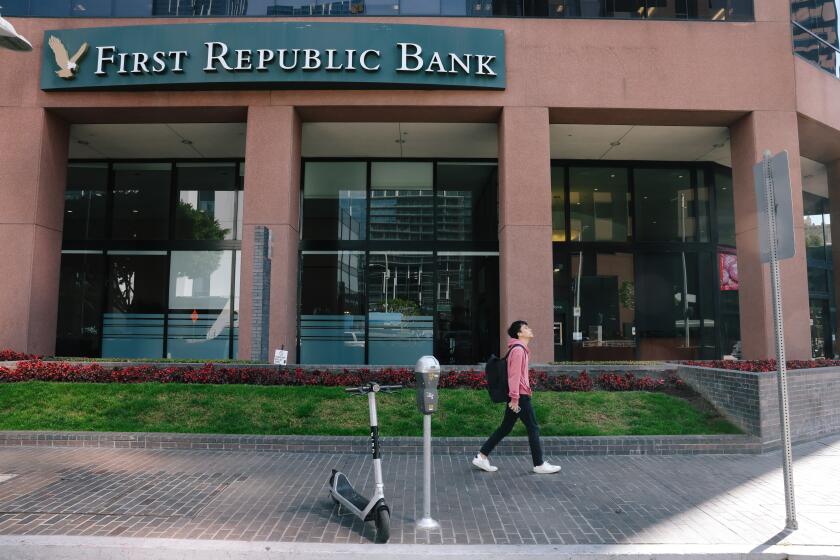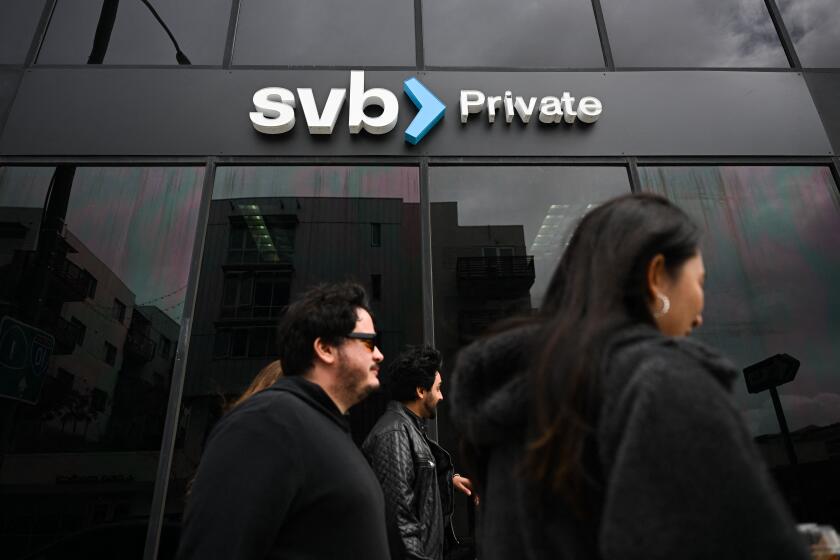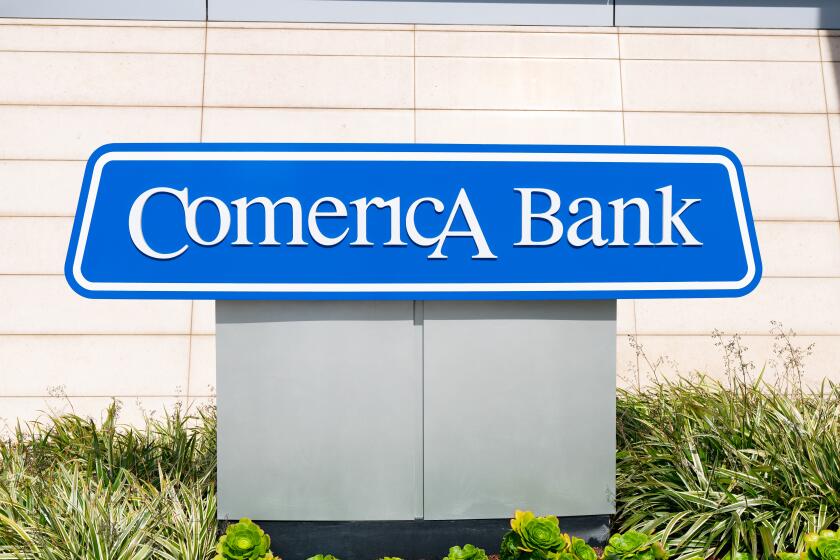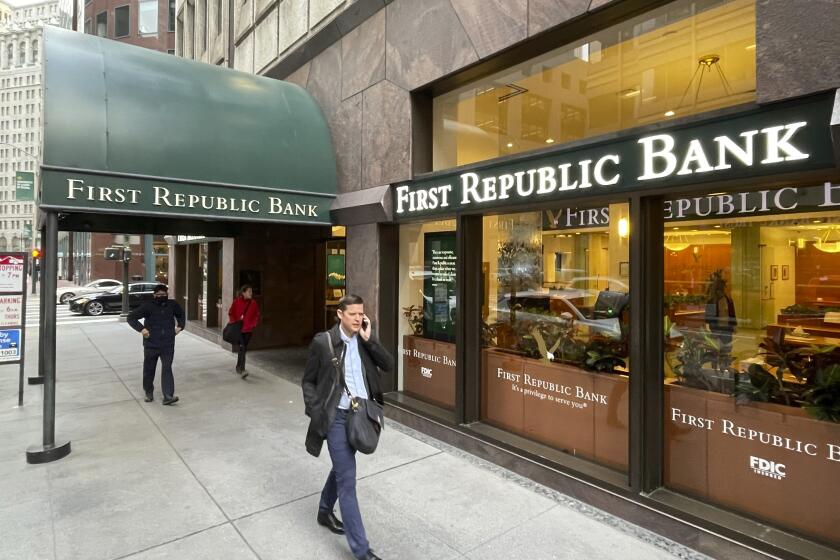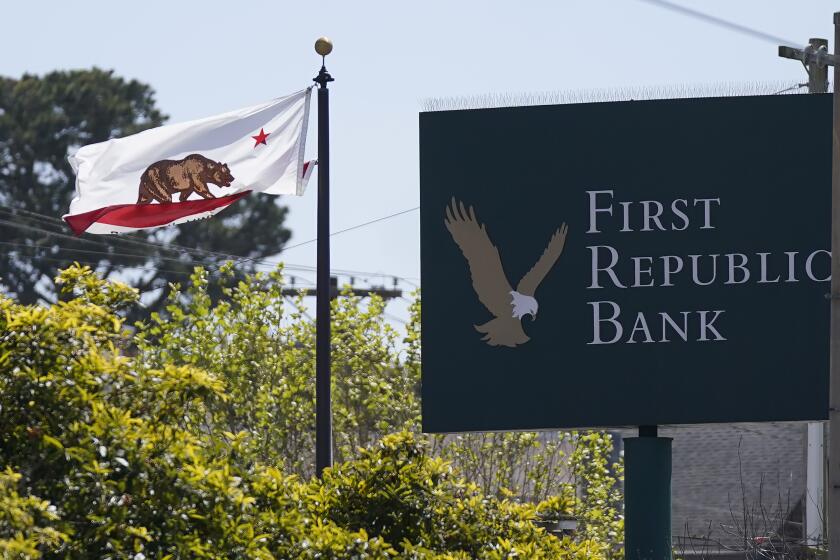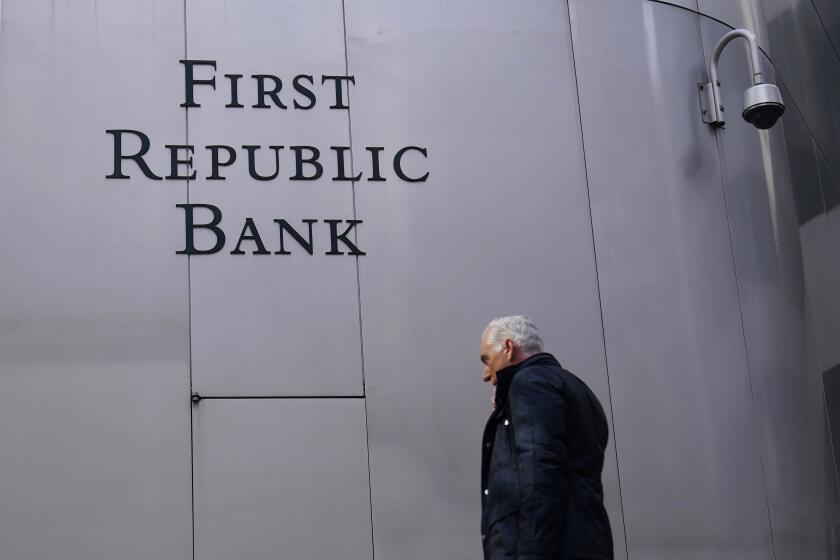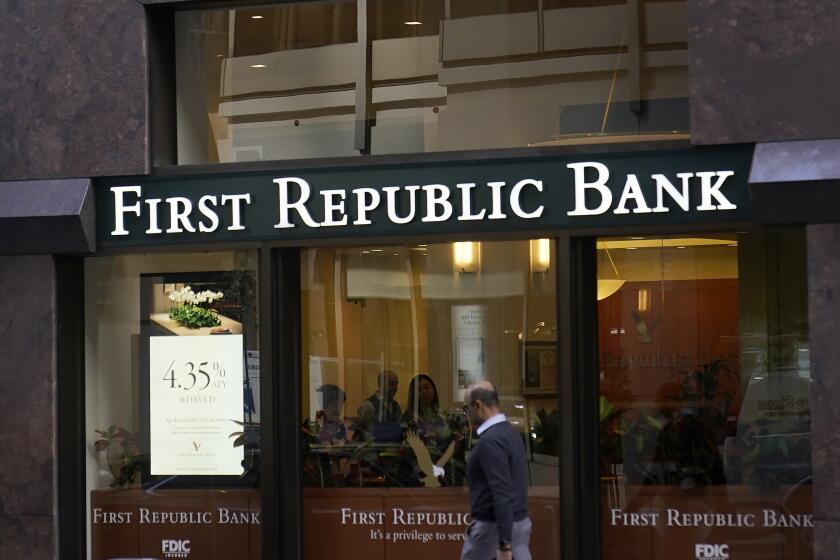The sudden failure of Silicon Valley Bank and its seizure by federal regulators have put a spotlight on the financial health of banks, in California and around the world. Aggressive interest rate hikes by the Federal Reserve and other central banks have undermined the value of long-term bond holdings, weakening some banks’ balance sheets and triggering stock sell-offs. In the U.S., actions taken to secure deposits at failed banks and provide liquidity to others in trouble have prevented the crisis from spiraling out of control, but fears of systemic contagion linger.
Summary
Key events
All stories
The California Department of Financial Protection and Innovation released its report on the events that led to the March 10 failure of Silicon Valley Bank — but the remedies aren’t fully clear.
Regulators have barely written the epitaph for First Republic Bank, but investors on Wall Street have already moved on to speculating which bank might be the next to fail.
First Republic became known for handing out interest-only mortgages at rock-bottom rates to borrowers with high incomes and exceptional credit scores.
The compensation structure for the industry has for too long rewarded taking on too much risk.
The latest historic U.S. banking failure is making few waves, and stocks drifted Monday as Wall Street braces for what it hopes will be the last interest rate increase for a long time.
The Federal Deposit Insurance Corp. says JPMorgan Chase Bank will take over all assets of troubled First Republic Bank.
